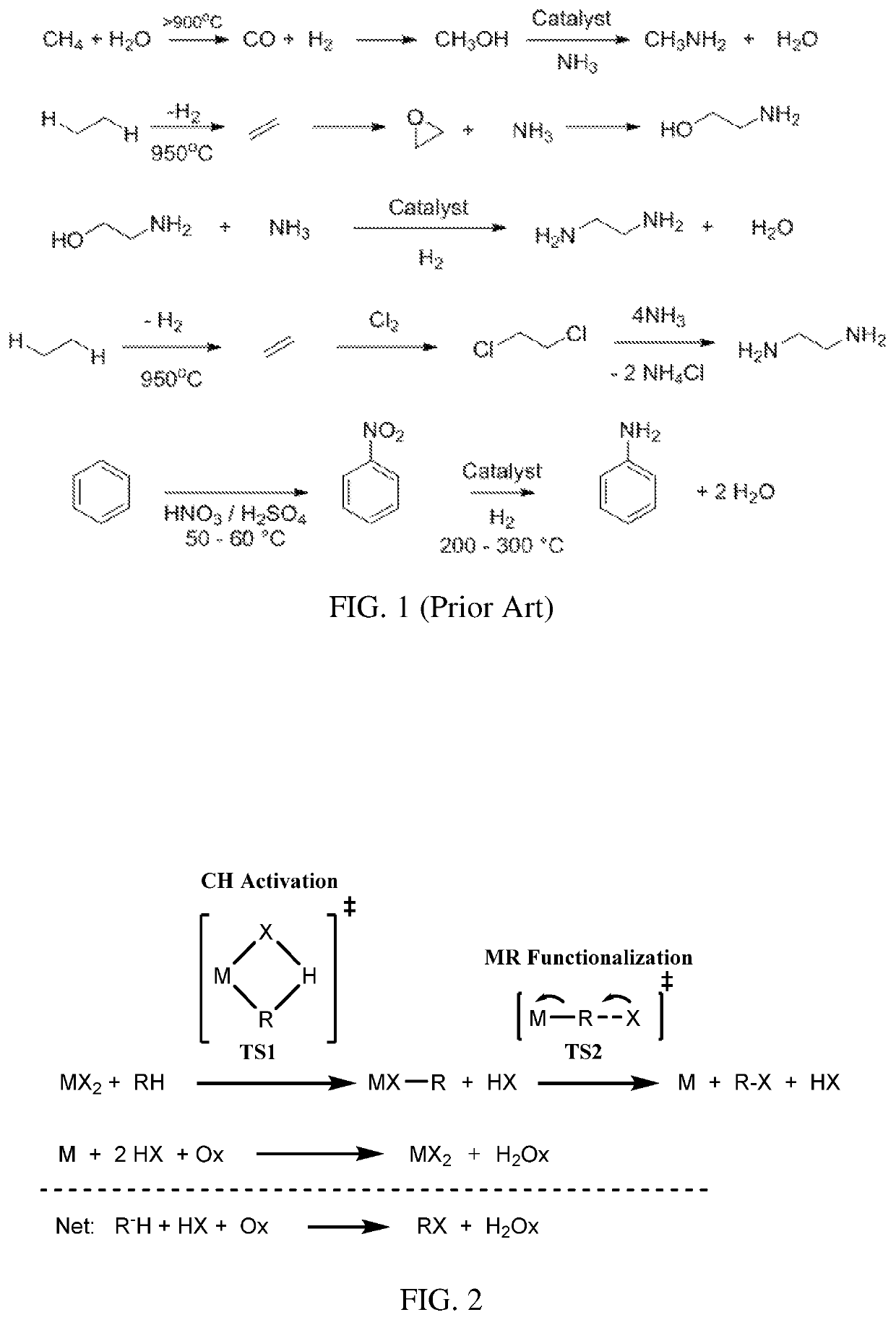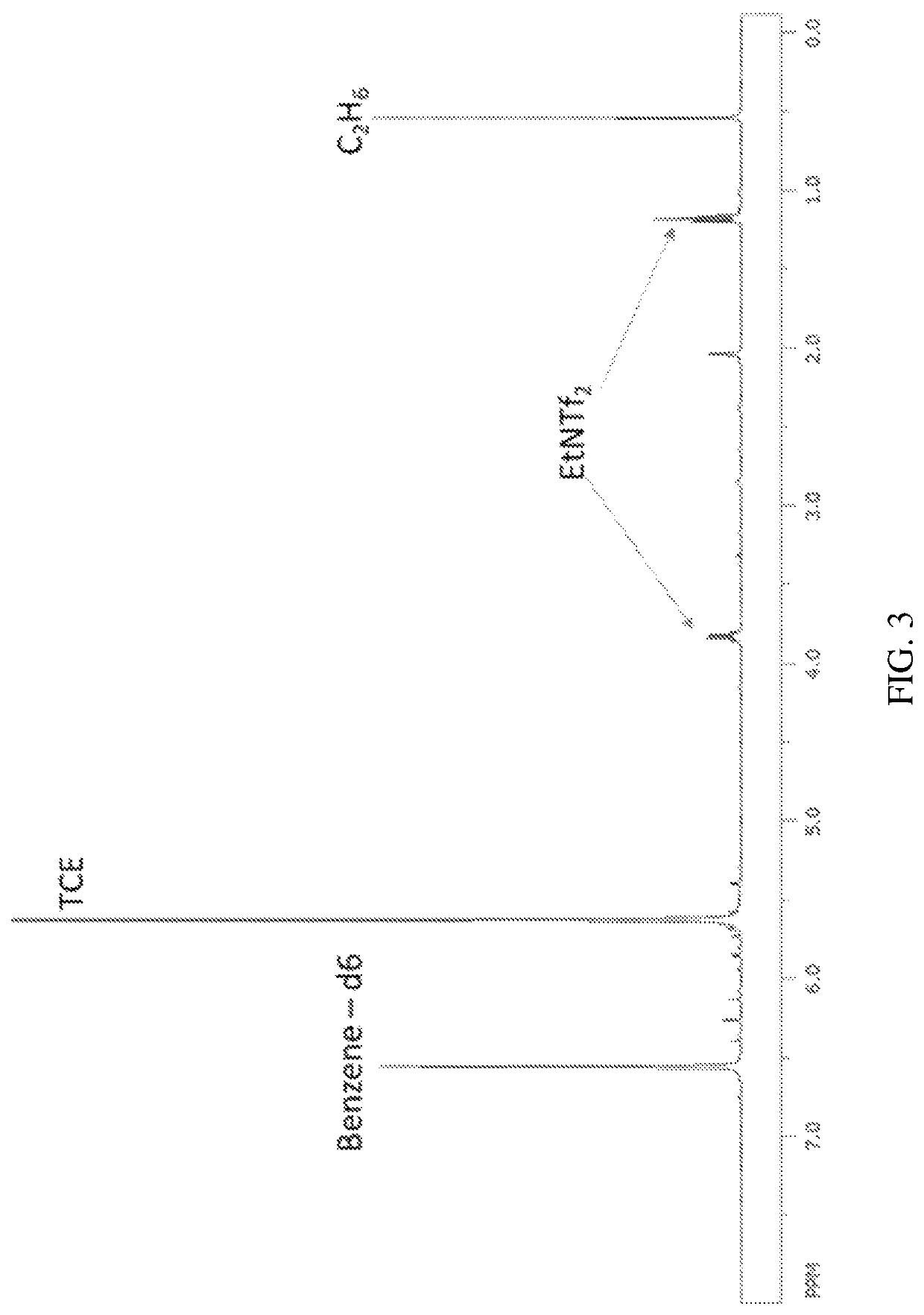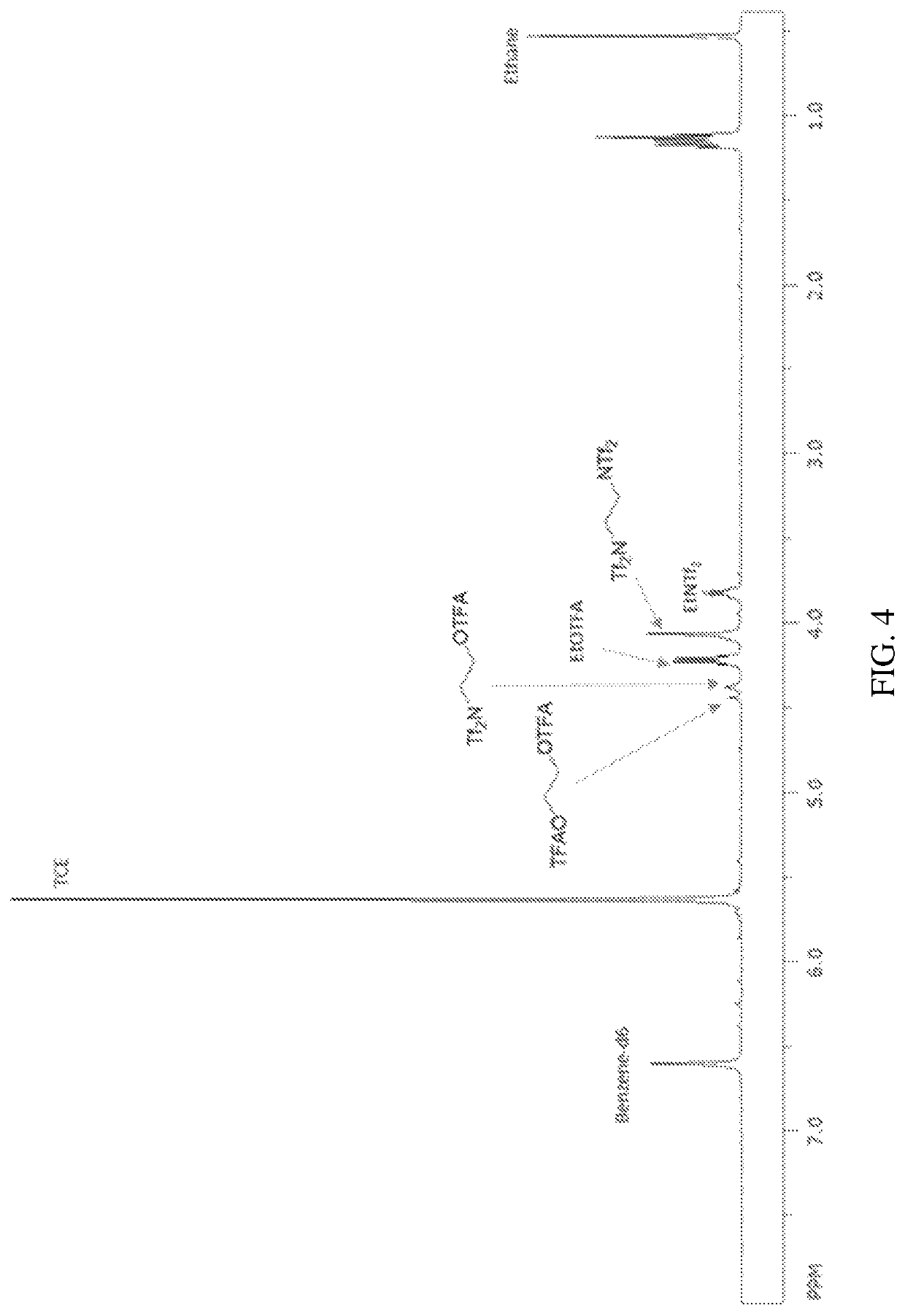Direct oxidative amination of hydrocarbons
a hydrocarbon and direct oxidation technology, applied in the field of direct oxidative amination of hydrocarbons, can solve the problems of low selectivity to products, low product selectivity, and low efficiency of low-molecular weight alkyl and aryl amine production techniques, and achieve low-cost and efficient techniques
- Summary
- Abstract
- Description
- Claims
- Application Information
AI Technical Summary
Benefits of technology
Problems solved by technology
Method used
Image
Examples
example 1
[0161]This example demonstrates the oxidation of ethane in the presence of oxidizing electrophile mercury di[bis(trifluoromethylsulfonyl)imide] (“Hg(NTf2)2”).
[0162]A 2 mL glass vial, equipped with a PTFE-coated magnetic stir bar, was charged with 0.1 mmol) of Hg(NTf2)2 in a glove box. To the vial was added approximately 500 mg HNTf2. The vial was inserted into a stainless steel, high pressure reactor and sealed. With the inlet valve of the reactor open, it was pressure degas sed with argon, 5 times at 500 psig (about 35 kg / cm2), followed by ethane, 5 times at 500 psig (about 35 kg / cm2). The reactor was then charged with 500 psig (about 35 kg / cm2) ethane and the inlet valve was shut. The reactor was heated to 180° C. with stirring at 1000 rpm for 3 hours. The reactor was cooled to room temperature, and the pressure was slowly released. The contents of the vial insert were dissolved in approximately 0.5 mL HOTFA, and 0.1 mmol 1,1,2,2-TCE was added as an internal standard. The formatio...
example 2
[0164]This example demonstrates the oxidation of ethane in the presence of oxidizing electrophile mercury bis(fluorosulphuryl)imide (“Hg(N(SO2F)2)2”).
[0165]A 2 mL glass vial, equipped with a polytetrafluoroethylene (PTFE)-coated magnetic stir bar, was charged with 56 mg (0.1 mmol) of Hg(N(SO2F)2)2 in a glove box. To the vial was added approximately 0.3 mL (3.14 mmol) of HN(SO2F)2. The vial was inserted into a stainless steel, high pressure reactor and sealed. With the inlet valve of the reactor open, it was pressure degassed with argon, 5 times at 500 psig (about 35 kg / cm2), followed by ethane, 5 times at 500 psig (about 35 kg / cm2). The reactor was then charged with 500 psig (about 35 kg / cm2) ethane, and the inlet valve was shut. The reactor was heated to 180° C. with stirring at 1000 rpm for 3 hours. The reactor was cooled to room temperature and the pressure was slowly released. The contents of the vial insert were dissolved in approximately 0.5 mL HOTFA and 0.1 mmol 1,1,2,2-TCE w...
example 3
[0167]This example demonstrates the oxidation of ethane in the presence of oxidizing electrophile thallium di[bis(trifluoromethylsulfonyl)imide] (“Tl(NTf2)2”), generated in situ from thallium trifluoroacetate (“Tl(OTFA)3”).
[0168]A 2 mL glass vial, equipped with a PTFE-coated magnetic stir bar, was charged with 55 mg (0.1 mmol) of Tl(OTFA)3 in a glove box. To the vial was added approximately 600 mg (about 2.13 mmol) of HNTf2. The vial was inserted into a stainless steel, high pressure reactor and sealed. With the inlet valve of the reactor open, it was pressure degassed with argon, 5 times at 500 psig (about 35 kg / cm2), followed by ethane, 5 times at 500 psig (about 35 kg / cm2). The reactor was then charged with 500 psig (about 35 kg / cm2) ethane and the inlet valve was shut. The reactor was heated to 80° C. with stirring at 1000 rpm for 1 hour. The reactor was cooled to room temperature, and the pressure was slowly released. The contents of the vial insert were dissolved in approximat...
PUM
| Property | Measurement | Unit |
|---|---|---|
| Electrophilic | aaaaa | aaaaa |
Abstract
Description
Claims
Application Information
 Login to View More
Login to View More - R&D
- Intellectual Property
- Life Sciences
- Materials
- Tech Scout
- Unparalleled Data Quality
- Higher Quality Content
- 60% Fewer Hallucinations
Browse by: Latest US Patents, China's latest patents, Technical Efficacy Thesaurus, Application Domain, Technology Topic, Popular Technical Reports.
© 2025 PatSnap. All rights reserved.Legal|Privacy policy|Modern Slavery Act Transparency Statement|Sitemap|About US| Contact US: help@patsnap.com



